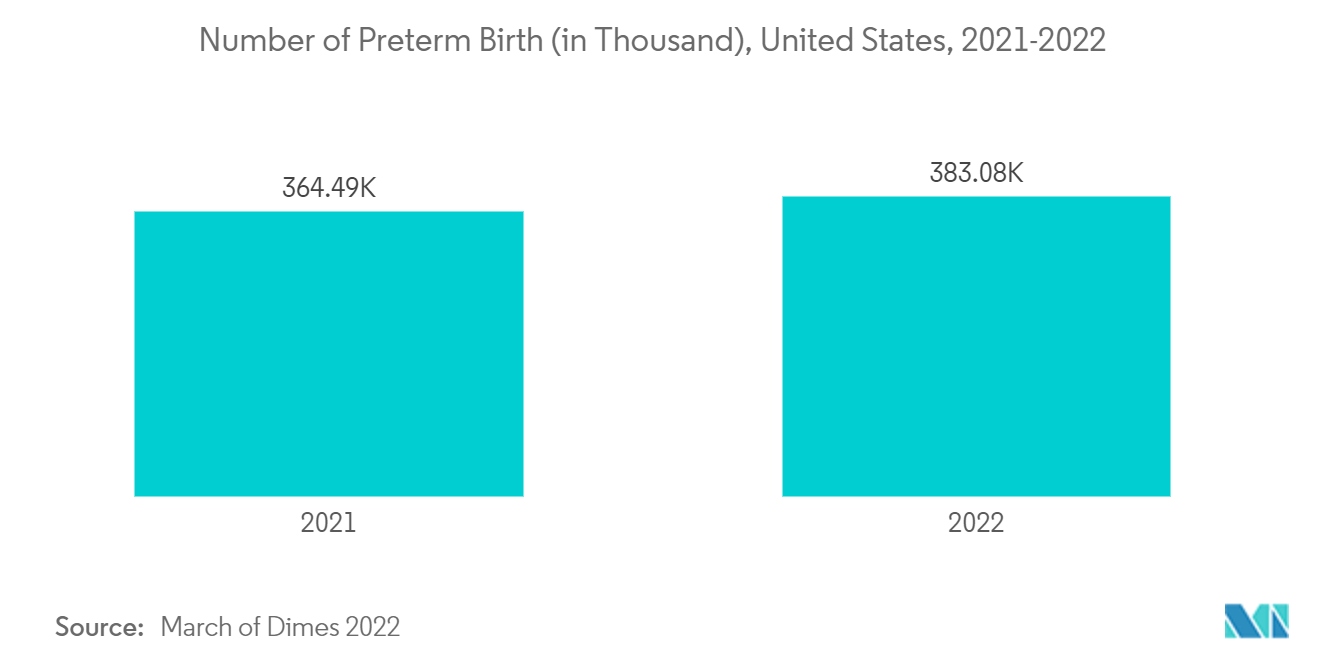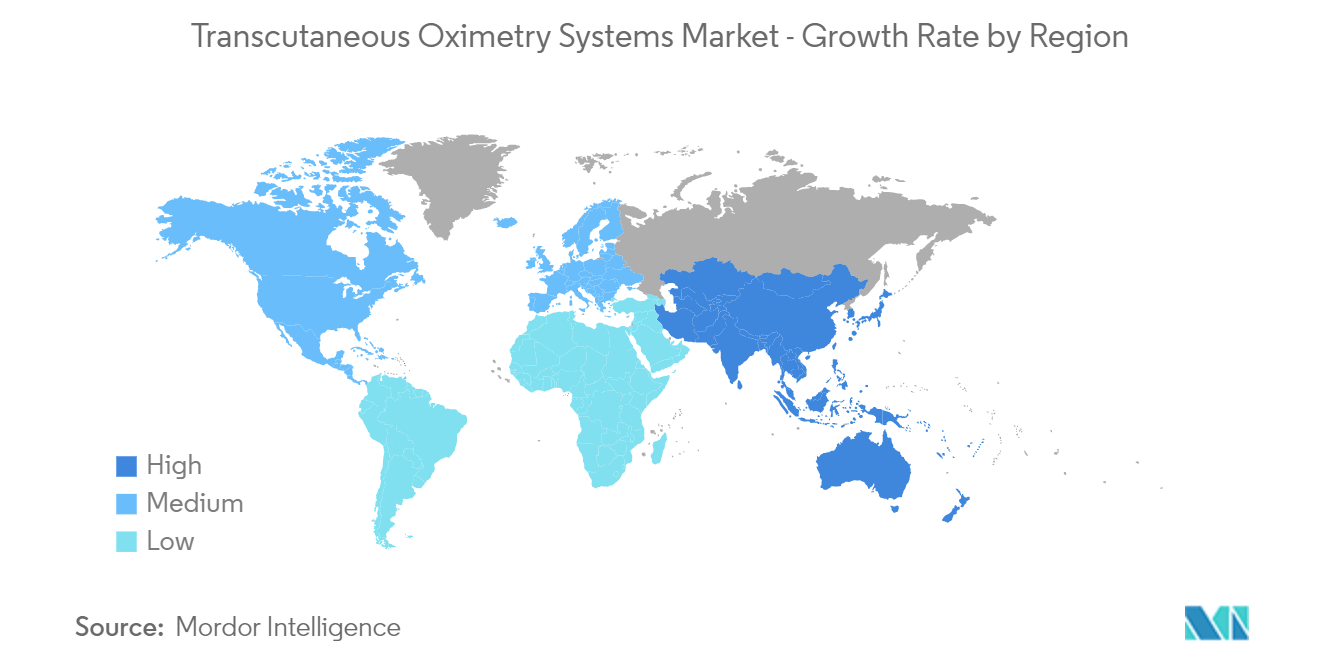Market Trends of Transcutaneous Oximetry Systems Industry
Preterm Births are Expected to Register High Growth Over the Forecast Period
The preterm births segment is expected to witness significant market growth due to the increase in preterm births across the globe in which premature babies in the NICU are fragile and at risk of sudden changes in oxygenation and carbon dioxide levels, which can cause severe complications. Transcutaneous monitoring in neonates provides a real-time overview of the patient's often fluctuating oxygenation (tcpO2) and ventilation (tcpCO2) status. For instance, as per the November 2022 update by WHO, every year, an estimated 15 million babies are born preterm (before 37 completed weeks of gestation).
Moreover, as per the article published in May 2022 in the Paediatric Medicine journal, transcutaneous oxygen monitoring, and pulse oximetry were both widely adopted by neonatal clinicians for many years. Even though, pulse oximeters are less suitable than transcutaneous pO2 (tcpO2) monitors for detecting dangerous hyperoxemia in extremely preterm infants. This is because large changes in oxygen tension may lead to small or no changes in saturations because of the flattening of the upper part of the S-shaped oxygen dissociation curve. Thus, owing to the increase in advantages offered by the transcutaneous oxygen system in preterm births than other oximeters, the studied segment is expected to witness significant growth over the forecast period.
Hence, due to the increase in preterm births and the increase in the utilization of transcutaneous oximetry systems for detecting the oxygen levels in preterm births are expected to drive the segment growth.

North America Anticipated to Hold a Significant Market Share Over the Forecast Period
North America is expected to hold a significant market share in the studied market over the forecast period owing to the factors such as an increase in the prevalence of peripheral vascular disorders, wound healing disorders, a rise in preterm births, and a surge in research and development in the region. For instance, as per the November 2022 update in CDC, in 2021, the rate of preterm birth among African American women (14.8%) was about 50% higher than the rate of preterm birth among white or Hispanic women (9.5% and 10.2% respectively). In 2021, preterm birth affected about 1 of every 10 infants born in the United States.
Moreover, the growing prevalence of diabetes along with an increase in spending on healthcare management is anticipated to increase the market growth. For instance, according to the International Diabetes Federation Diabetes Atlas Tenth edition, in 2021, around 32.2 million people in the United States had diabetes, projected to grow to 36.3 million by 2045. The rising number of diabetic cases in the nation is expected to increase the number of diabetic ulcer cases and contribute to market growth in the studied region. Furthermore, as per the August 2022 update in NIH, transcutaneous oximetry recently become increasingly popular for wound assessment and patient selection for hyperbaric oxygen therapy (HBOT). Thus, owing to the increase in advantages offered by the transcutaneous oximetry systems is expected to fuel the market growth.
Hence, the rise in diabetic mellitus and the increase in preterm births are expected to drive market growth in North America over the forecast period.

